|
BULB LOG 22 --- 30th May 2007
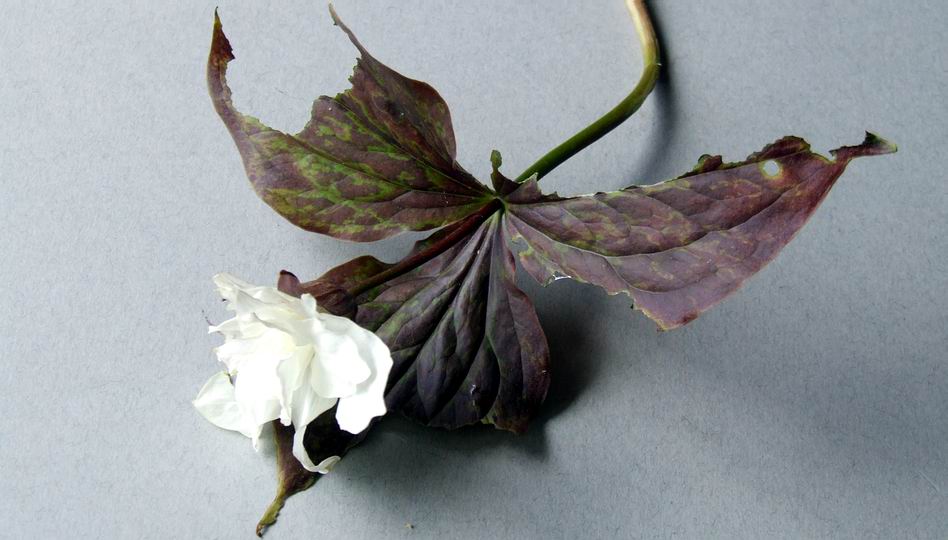
Trillium grandiflorum leaf
What about this for a Trillium grandiflorum leaf, and it is a double flowered form? Dark purple colouration and patterns could be very attractive and set off the white double flowers perfectly so will I make myself a fortune from this clone? The answer has to be no as this colour has been not been brought about by careful breeding but by the intervention of a slug which had half chewed through the stem at ground level. Obviously the colour change has been brought on because the plant has less than half the width of the stem left for moisture to rise up causing stress and hence the colour change. What it does show is that there is the potential for the leaves to have a dark pattern on them so all we have to do is find out a less drastic way to bring it out.
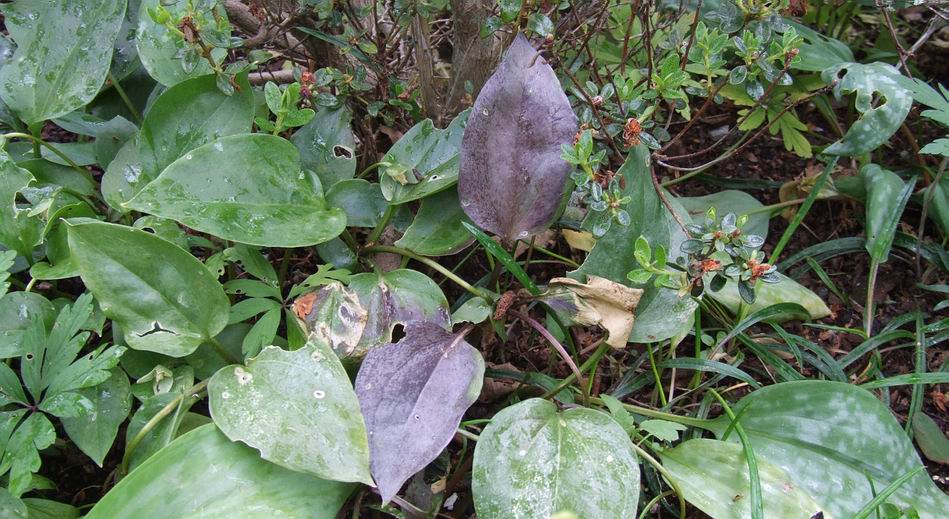
Purple Trillium rivale leaf
Here is a similar effect on a pair of Trillium rivale leaves also suffering from the attentions of a slug at the base of the stem - the leaves with the silver spots are Erythronium dens canis.
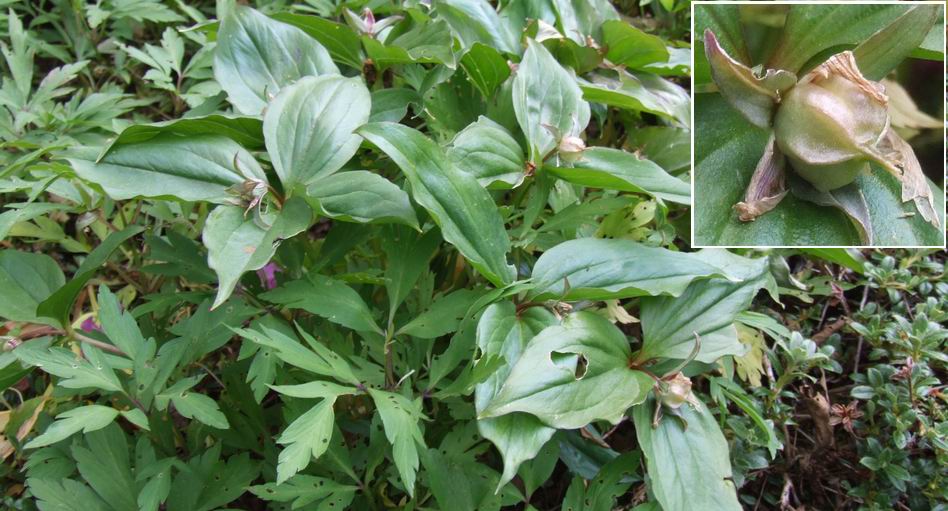
Trillium hibbersonii seed pods
While looking around the dwarf trilliums I notice that Trillium hibbersonii has many seed pods on. I need to watch these carefully as the pods do not open from the top to slowly release the seeds, they suddenly start to disintegrate, letting go from the stem and falling to the ground where the seeds can then be easily gathered by ants which would help distribute them in the wild. As I want to sow these seeds in pots I need to visit them daily and collect them before they disintegrate. If you desperately want seed of a plant in your garden it is always best to collect it just before the seed pods open naturally as the seed will be perfectly viable and then you don't run the risk of losing it. Of course you may want to let plants spread naturally as I am doing with some erythroniums which I am allowing to naturalise in certain beds.
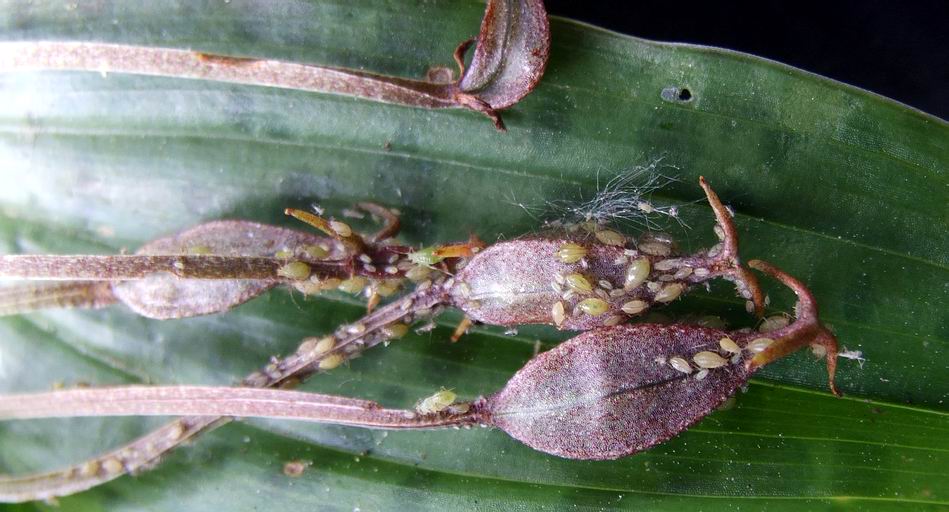
Aphids on Scoliopus seed pods
While checking the plants with disintegrating seed pods I found, on Scoliopus bigelovii, this infestation of aphids which I gently rubbed out with my finger and thumb. It must be the rising levels of starch and sugars flowing to the seeds that attract aphids to seed pods as well as the stems and leaves of bulbs that are retreating into dormancy. This is something we need to watch out for even though it may be too late for the aphids to do serious damage to the plants they can still bring in and infect the bulb with a virus.
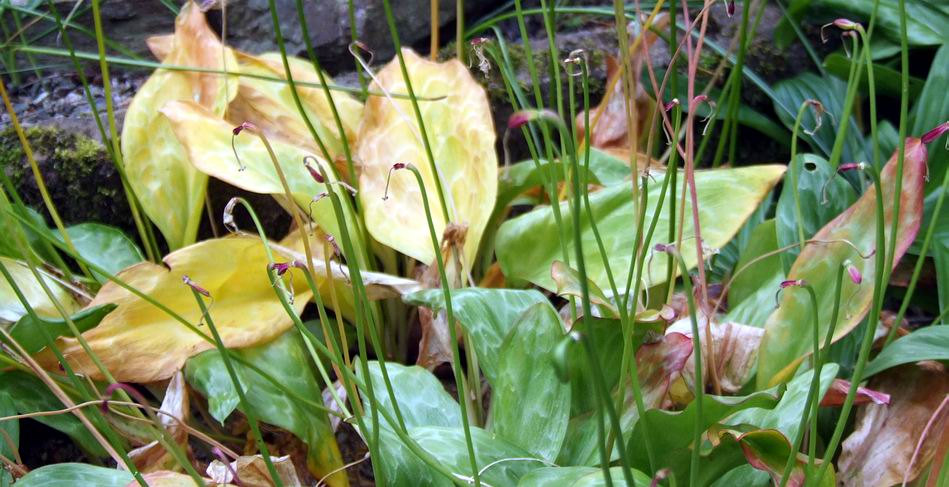
Infertile Erythroniums
What a strange season of weather we have had with effectively May coming before April. In April we had very warm sunny weather and now that May is here we have had a month of April showers and cool temperatures, this has resulted in many bulbs rushing into flower early in the first half of April compressing the flowering season into a shorter period of time as the heat also caused the flowers to go over quicker than in most years. Now the colder weather is here things have slowed right down again and I think that by the middle of June every thing will have evened out. However the point I wanted to make is that the warm flowering period has not necessarily resulted in a bumper seed crop - these erythroniums have set no seed at all this year.
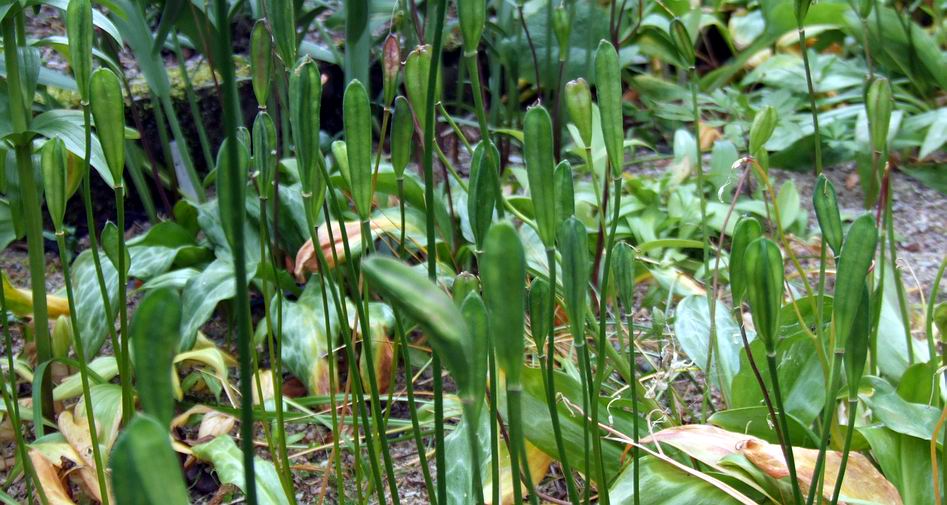
Fertile Erythroniums
Less than a meter away this group of erythroniums are very fertile with nice plump seed capsules. Why the difference? Well I think that while the flowers were able to respond quickly to the heat, the insects that would pollinate them were in even shorter supply this year and I did not get around quickly enough with my paint brush. There is another factor and that is that the non-fertile ones are a hybrid which does set seed most years but not as freely as the species do.
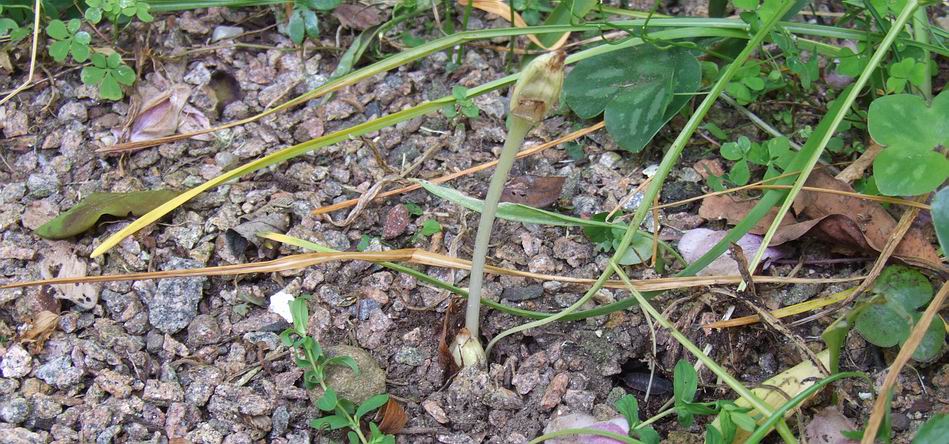
Crocus seed pods
It is also time to search for Crocus seed pods which will only now appearing above the ground as the flower stem finally elongates. I will not be collecting these as I would like them to naturalise into drifts in this bed, I may however aid the distribution a bit by scattering them around the parent plant as we have no ants in our garden to do this for me.
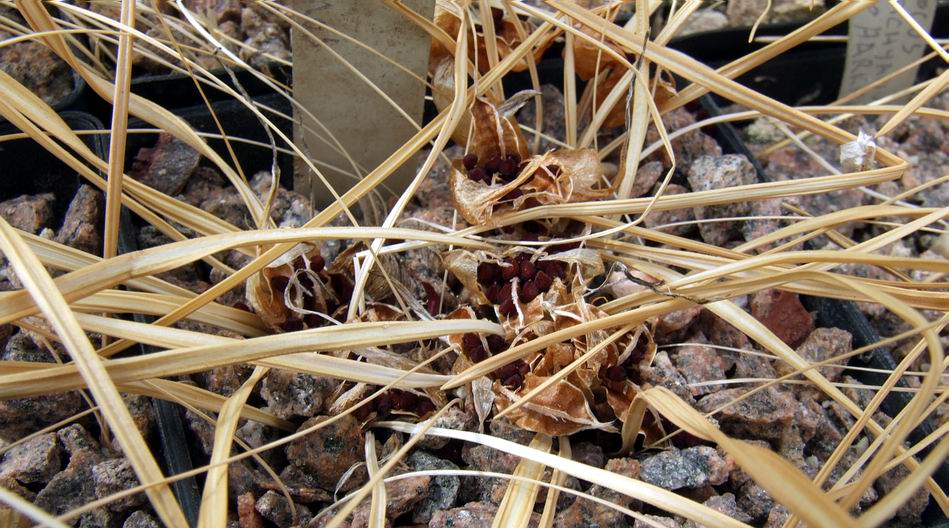
Ripe Crocus seed pods
In the bulb house it is a different matter - I will be collecting the seed here and then sowing it into pots in the September. The exception to this is where I only have one or two crocus corms in a pot then I will leave the seed just now to be sown directly into the pot beside the parent corms to save space - more on this in a later log.
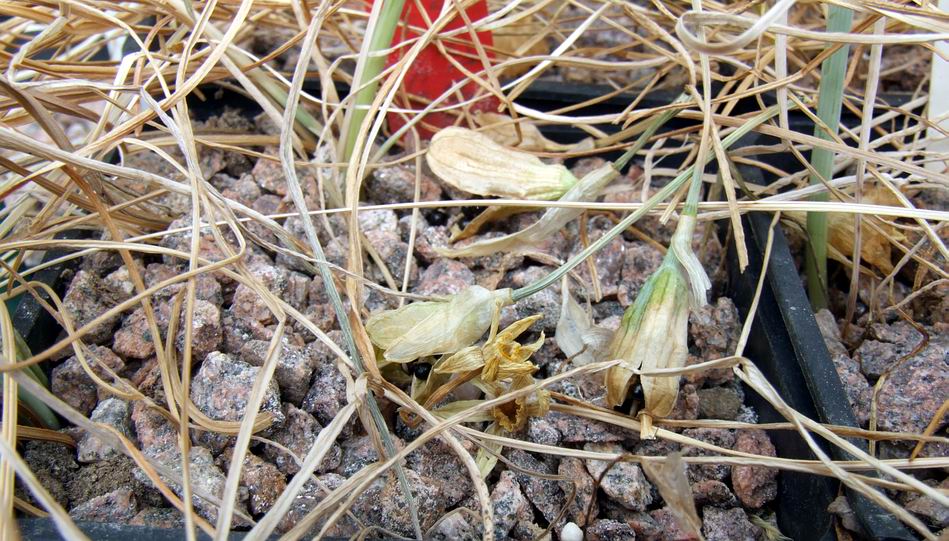
Narcissus seed pod
This is what I am trying to avoid; when a stem topples over and the ripe seed pod falls onto another pot - this is how easy it is to get your bulb collection all mixed up.
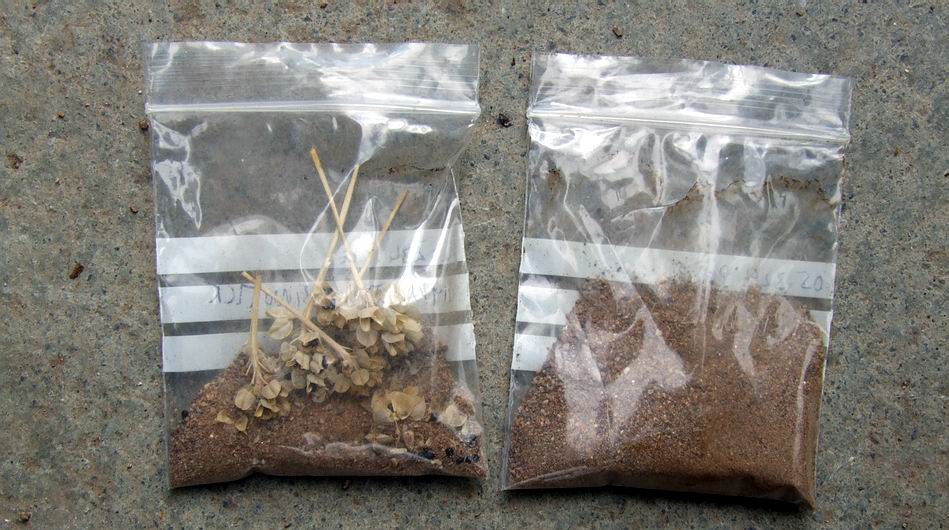
Storing seeds in dry sand
I will store the Narcissus, Crocus and similar types of seed in plastic packets filled with fine dry sand until late August/September when I should sow it. I have discussed the reasons for doing this in previous years but briefly it prevents them drying out too much and in my view closely imitates the conditions that the seed would experience in the wild. Ok I hear you say that the seed is sown as soon as the capsule splits in the wild and there are no plastic bags involved. Yes but in the wild the soils that the seed is shed onto is warm and dry for the summer before the Autumn rain storms come along - it is not that way in Aberdeen where the soils are more likely to be cool and moist. An alternative method, if I had space, would be to sow the seed now into dry compost and keep it dry under glass until the autumn watering. I no longer place the sand/seed bags in a fridge as I believe they may need a warm period for the embryo to fully form and I get better germination if I store them out of direct sunlight i
n the potting shed until sowing time. I normally remove the seeds from the capsules before placing them in the bags of sand but the left hand one has seed of a small muscari that I did not want to lose. As it was going to ripen last week when I was away, I cut off the pods before they opened and placed them in a bag with sand. The sand serves to absorb the moisture from the capsules and prevents the seeds just rotting off as they would have with out the sand - now the seed has been shed I will remove the capsules.
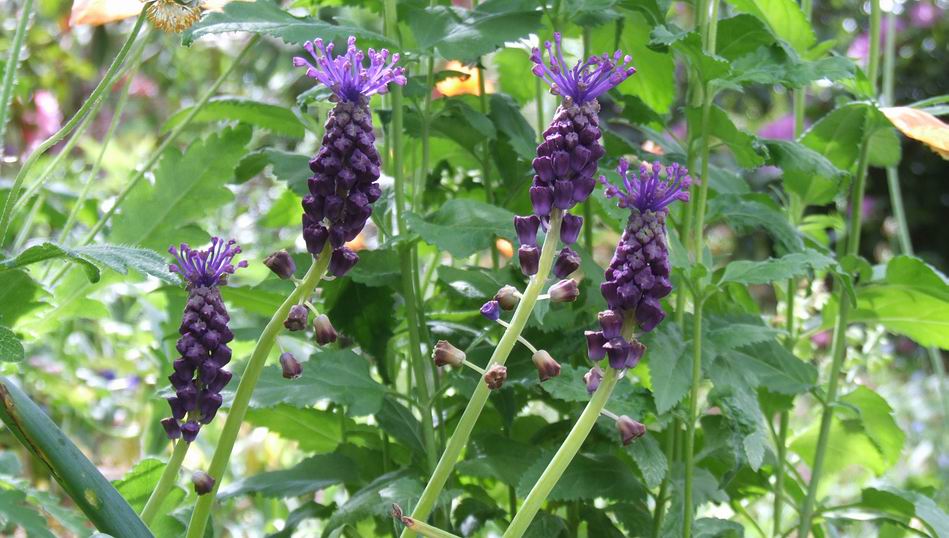
Muscari comosum
I do have a few bulbs in flower like this group of Muscari comosum with its strange display of non fertile flowers on the top of the spike.
Now a new feature for the bulb log - Book Reviews. When I get a copy of a newly published bulb related book I will review it here and such a book has just arrived by post.
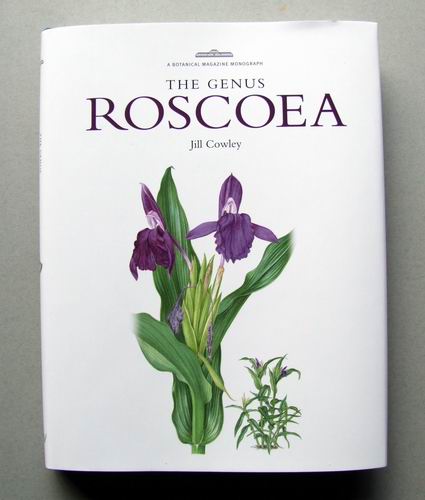
The Genus Roscoea
The Genus Roscoea, a monograph, written by Jill Cowley and Published by The Royal Botanic Gardens Kew.
On first flicking through the 190 pages of this monograph I was impressed by the quality of the printing and the paper used also the strong stitched binding will ensure that this book will not fall apart like some do nowadays.
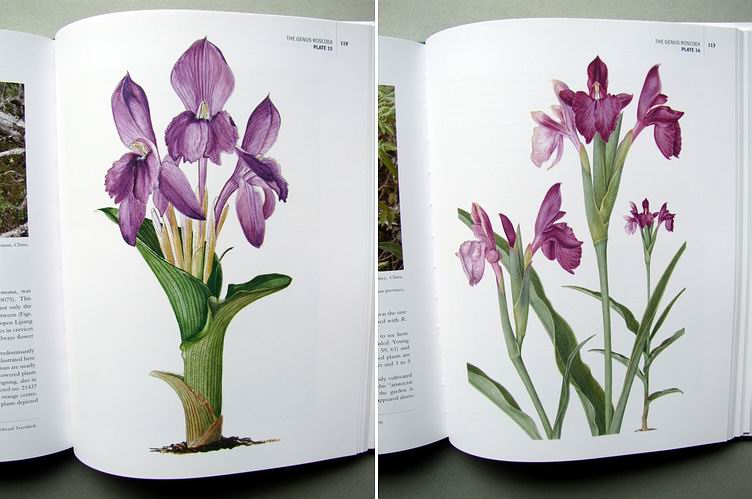
Beautiful illustrations
While flicking through I was drawn to the lovely illustrations of the species reproduced from original watercolour paintings mostly by Christabel King. These are extremely detailed and will prove very useful in helping to identify any Roscoeas you may have.
The opening chapters cover the history of the genus from when it was first looked at by European Botanists in 1805 right up to the present times with the recent descriptions of new species; that is followed by a chapter on William Roscoe for whom the genus was named. I welcome this sort of detail in a book as this background history greatly adds to my enjoyment of the plants.
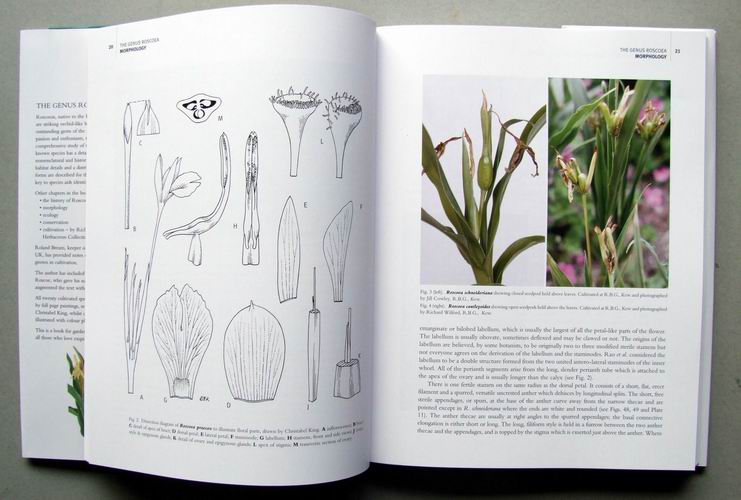
Diagrams and pictures
A chapter on Morphology is followed by a chapter on Cytology, Anatomy, Palynology and Phylogenetic Studies; all very technical but it is accessible and well written so it is easy to understand why this information is essential to botanists as they try and sort out the different plant species. Good diagrams and pictures help illustrate the structure of all parts of the flowers.
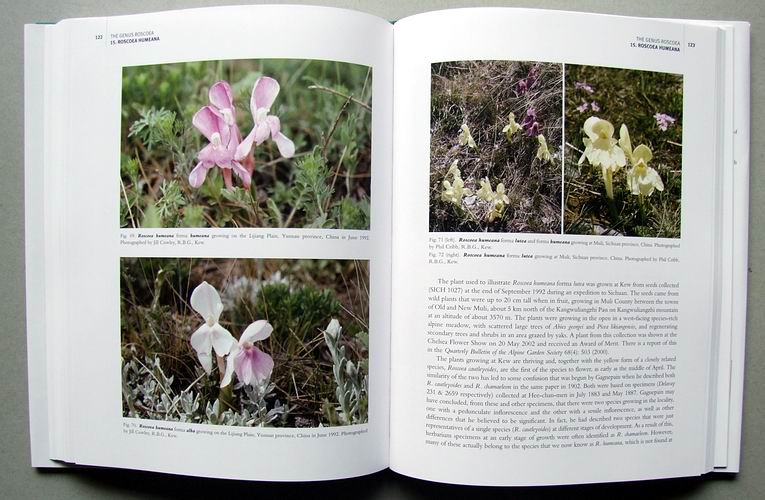
Habitat pictures
A chapter on Ecology and Conservation looks at the habitat of these plants and the threats that are inevitable in this world; again it is well illustrated with habitat pictures and Roscoeas growing in the wild.
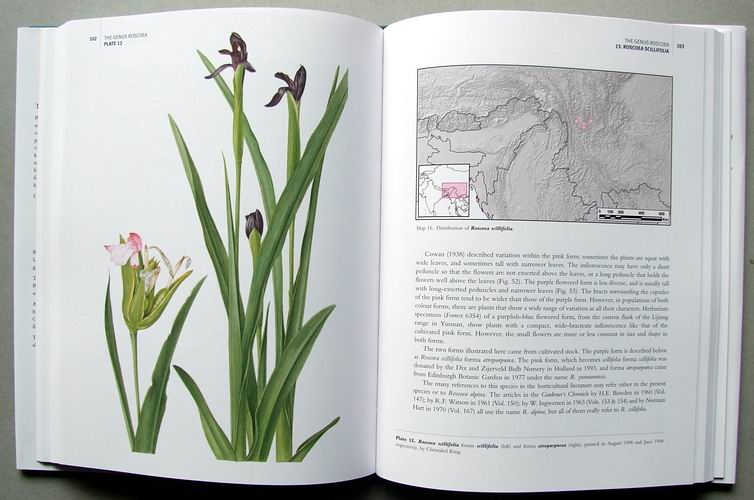
Paintings and maps
The bulk of the book looks at all the species in great detail with the botanical descriptions and a discussion of the variations found within a species - as before this is very well illustrated with paintings and pictures of the plants. I especially like the way the distribution maps have been produced to show the mountain ranges as if they were embossed onto the pages.
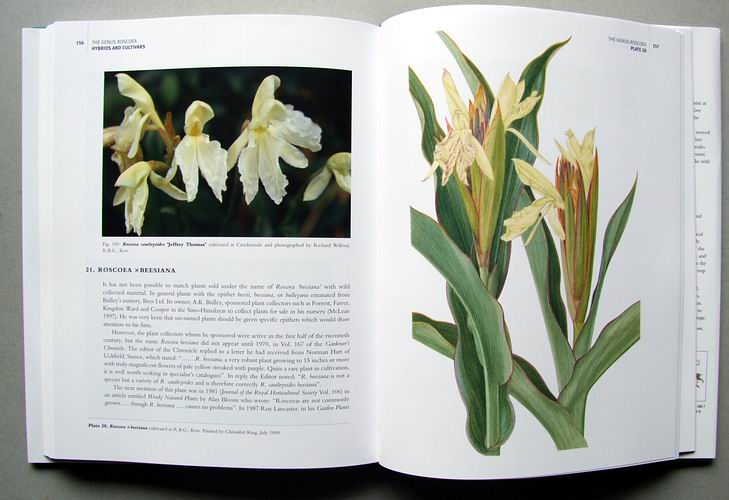
Cultivars
Cultivars and hybrids are also well covered with an input from Roland Bream, keeper of the National Collection in the UK. Most of the cultivars we are familiar with in our gardens are discussed and illustrated here.

Cultivation
Richard Wilford of Kew Gardens adds excellent advice on cultivation describing the best conditions for growing Roscoea both in pots and the garden.
I think this is an excellent book and if you like plants it is a book that you will want to add to your shelves for the illustrations alone even if you do not grow Roscoeas. You are unlikely to read it from cover to cover, it is not that sort of book, but you will be fascinated by the opening chapters and then refer back continually to the species descriptions as the plants come into flower each year. With the key to the species, the concise descriptions, illustrations and pictures you should be able to identify accurately any Roscoeas you may find. Priced at £33.00 I rate it a must have book.
www.kewbooks.com/asps/ShowDetails.asp?id=609
^ back to the top ^
|

